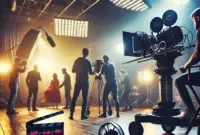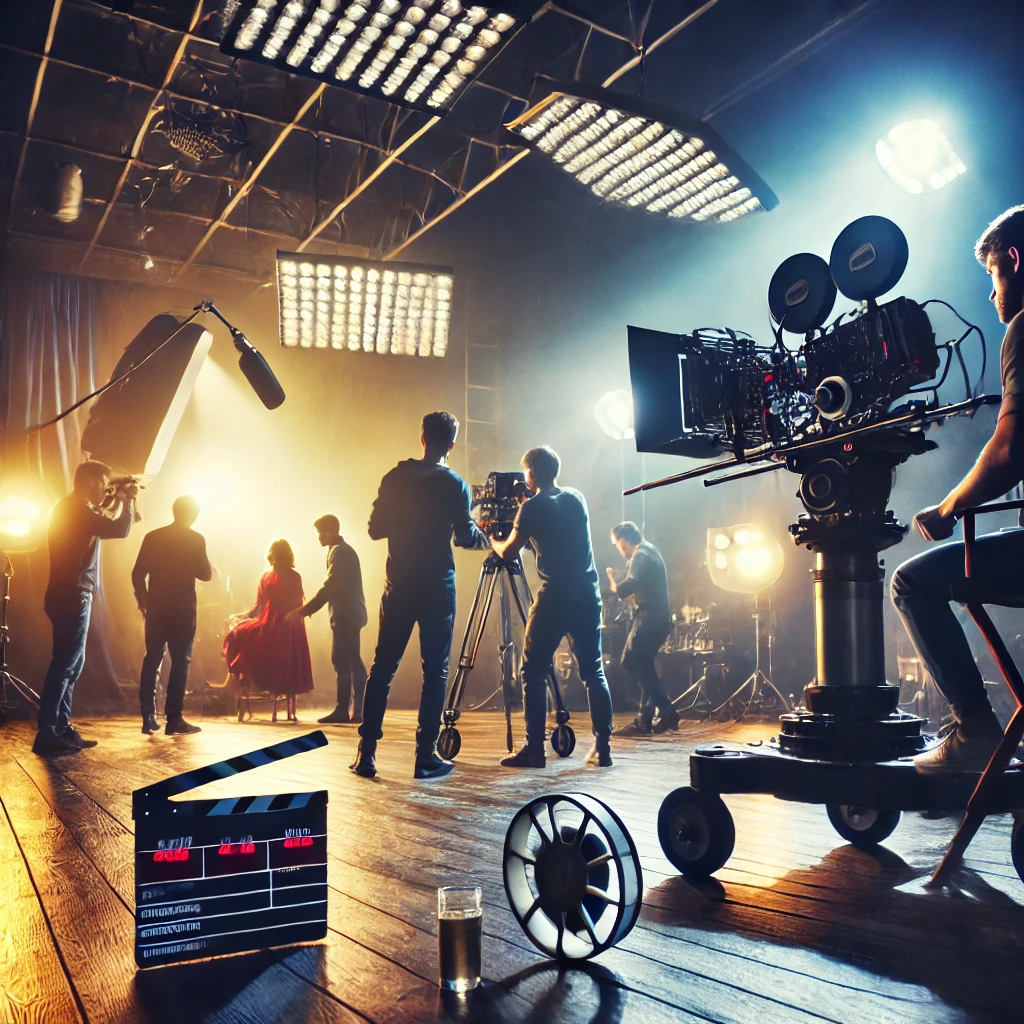From Script to Screen: The Art and Magic of Movie-Making

Hey, bestie! Ever wonder how your favorite movies come to life? From the moment an idea is born to the day it hits the big screen, the process of movie-making is nothing short of magical. Whether you’re into rom-coms, action-packed blockbusters, or indie films, each movie has a fascinating journey from script to screen.
In this article, we’re diving deep into the world of cinema and exploring how films are made. Trust me, after this, you’ll appreciate your favorite flicks even more. Let’s break it down from the script all the way to the screen, where the final masterpiece unfolds!
1. It All Begins with an Idea: Writing the Script
Before any cameras start rolling, every great movie begins as an idea. Maybe it’s a character, a scene, or an entire storyline. This is where screenwriters come in — they turn that spark of inspiration into a fully fleshed-out script. The script isn’t just dialogue; it includes everything from setting descriptions to character actions. It’s the blueprint of the entire film.
Screenwriters spend hours brainstorming, writing, and rewriting until the story is tight, the characters are compelling, and the pacing feels just right. Whether it’s an original idea or an adaptation of a book or comic, the script is what guides the rest of the production.
Pro tip: If you love movies, try reading a few scripts from your favorite films. It’s so cool to see how everything translates from the page to the screen!
2. The Director’s Vision: Bringing the Story to Life
Once the script is finished, it’s time for the director to take over. The director is like the captain of the ship, responsible for turning words on a page into moving images on the screen. Directors have their own styles and visions, which is why some movies feel so distinct. Think of how Quentin Tarantino’s movies are known for sharp dialogue and violence or how Wes Anderson’s films are always visually symmetrical and quirky.
The director works closely with producers to assemble a team, including casting directors, cinematographers, costume designers, and production designers. Together, they map out how each scene will look and feel, ensuring the movie’s overall tone is consistent.
Pro tip: Pay attention to directors! Sometimes you can recognize their style just by watching a few minutes of the film. Directors like Christopher Nolan, Sofia Coppola, and Steven Spielberg each have signature styles that make their movies stand out.
3. Casting the Perfect Actors
Imagine watching your favorite movie, but with totally different actors. Weird, right? Casting is super important because the actors bring the characters to life. This is where casting directors come in. They find actors who fit the characters based on their look, acting skills, and how they interact with other characters.
Sometimes, actors are cast against type, which means they take on roles completely different from what they’re known for. Think about how Heath Ledger went from romantic heartthrob to the menacing Joker in The Dark Knight. The casting director’s job is to make sure each role is filled by someone who can fully embody the character.
Pro tip: Fun fact! Some actors go through intense auditions to land their roles, while others get offers directly because they’re so perfect for the part.
4. Filming the Magic: The Production Phase
Now we’re getting into the action — literally. The production phase is when the actual filming happens. This is where all the planning comes together, and it’s one of the most intense parts of the process. The crew — made up of directors, cinematographers, sound designers, lighting experts, and more — works day in and day out to shoot every scene.
Movies aren’t filmed in order. Instead, they’re shot based on location, availability, and other factors. This means an actor might film a dramatic scene from the end of the movie one day and a lighthearted beginning scene the next.
Cinematographers (also known as directors of photography) are key players during filming. They’re responsible for capturing the film’s visual style, from camera angles to lighting. Their work is what makes a movie look visually stunning. Think of the iconic long take in 1917 or the vibrant, neon-lit scenes in Blade Runner 2049.
Pro tip: If you’re curious about how a movie was filmed, check out behind-the-scenes footage. It’s fun to see the difference between the raw footage and the final product!
5. Special Effects and CGI: Creating the Impossible
Ever wondered how superheroes fly or how alien worlds look so real? That’s where special effects and CGI (computer-generated imagery) come in. These tools make the impossible possible, from creating giant monsters to simulating epic space battles.
There are two types of effects used in movies: practical effects and CGI. Practical effects involve using real props, models, and stunts. Think of the puppets in The Dark Crystal or the huge sets used in Inception. CGI, on the other hand, involves creating digital images that are seamlessly blended into the film. For example, The Lion King remake used CGI to create all the animals, making them look lifelike.
When done well, the blend of practical effects and CGI can create a world that feels both real and fantastical. Movies like Avatar and The Lord of the Rings are prime examples of how CGI and special effects work together to immerse audiences.
Pro tip: Sometimes, you can spot when CGI is a little off, like when it doesn’t blend perfectly with the real environment. But in most big-budget movies, the effects are so good you forget it’s even CGI!
6. Post-Production: Editing, Sound, and Music
Once filming wraps up, the movie is far from finished. The post-production phase is where everything comes together. This includes editing, sound design, and adding the final touches like music and visual effects.
Editors take hours of raw footage and cut it down into the final film, ensuring the pacing is just right and the story flows smoothly. A well-edited movie keeps you on the edge of your seat, while poor editing can leave you confused or bored.
Next comes sound design, which involves everything from dialogue cleanup to adding sound effects like explosions, footsteps, or weather sounds. Ever notice how thunder in movies sounds way more dramatic than in real life? That’s sound design doing its thing!
Finally, music plays a huge role in setting the tone of a movie. Think of how the haunting soundtrack of Jaws made the shark feel more terrifying or how the upbeat songs in La La Land lifted your mood. Composers work closely with directors to create a score that enhances the movie’s emotional impact.
Pro tip: Pay close attention to the music in movies. Sometimes it’s so subtle you don’t even notice it, but it’s always there, helping guide your emotions!
7. Marketing and Release: Lights, Camera, Action!
The movie’s done, but now comes the final step: getting people to watch it! This is where marketing comes in. Trailers, posters, interviews, and social media campaigns are all part of the effort to build excitement around a film.
Studios often release teasers months (or even years) before a movie’s release to start generating buzz. Blockbusters like Avengers: Endgame had huge marketing campaigns, while indie films might rely on film festivals and word of mouth to gain attention.
When the release date arrives, the movie is shown in theaters or on streaming platforms like Netflix, Disney+, or Amazon Prime. And just like that, the journey from script to screen is complete, ready for audiences to enjoy.
Pro tip: Ever wonder why some trailers spoil big plot points? It’s a tricky balance! Studios want to give you enough info to get excited but not so much that the whole plot is revealed.
Conclusion: The Magic of Movie-Making
And there you have it! From the spark of an idea to the final cut, the process of movie-making is a wild, creative adventure. Whether it’s a massive blockbuster or a low-budget indie film, every movie requires dedication, hard work, and tons of talent to bring it to life.
Next time you sit down for a movie night, you’ll know just how much effort went into each scene, line of dialogue, and camera angle. So, pop that popcorn, grab your favorite drink, and enjoy the magic that is cinema!
Happy watching, bestie!
